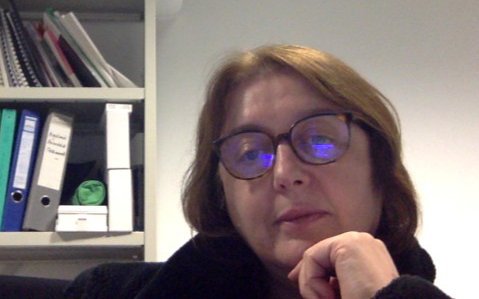Centre National De La Recherche Scientifique (CNRS)
CNRS has unique expertise in electromagnetics and bioelectromagnetics. This includes dosimetry (experimental and numerical dosimetry) of any biological sample (2D, 3D cell models) on any support (flask 25 cm2, 6- to 96-wells plates, etc). CNRS contributes to the challenging design and the full characterization of the setups for the experimental work, especially at 26 GHz. CNRS has a complementary expertise in cellular and molecular biology, toxicology, biophysics, and cell engineering. CNRS researchers are and have been members of collective expertise on this topic and contributed to the identification of the relevant target tissue and pertinent biological endpoints.
-

Prof Isabelle Lagroye
Director of studies (professor) EPHE.
Role in ETAIN: Isabelle is biologist/pharmacist working on the effects of electromagnetic fields including radiofrequency fields (RF) for about 20 years. She is responsible for the work package “Impact on Human health, with a focus on skin and eyes” and will supervise the work, contributing mainly in the investigation of DNA damage markers in the 3D-epithelium model.
-

Dr Yann Percherancier
Senior Researcher at CNRS.
Role in ETAIN: Yann is a biochemist and is responsible for the work related to the effects of radiofrequency fields (3.5 and 26 GHz) on radical oxygen species production and DNA damage at the molecular level. He is an expert in bioluminescence resonance energy transfer, a technique that uses specific molecular probes (one luminescence donor and one luminescence acceptor) to investigate protein-protein interactions, the latter governing biological effects in the cells.
-

Poulletier de Gannes Florence
Researcher Engineer at CNRS.
Role in ETAIN: Florence is a researcher engineer having a long expertise in cell cultures (primary cells, cell lines) and different techniques such as flow cytometry, ELISA assays, immunohistochemistry, and fluorescent microscopy analysis, etc that she uses for the investigation in bioelectromagnetics
-

Dr Rosa Orlacchio
Associate Professor EPHE.
Role in ETAIN: Rosa is a young scientist with a multidisciplinary expertise. She can build setups to expose cell to electric pulses and electromagnetic fields, and perform numerical and experimental dosimetry to characterize the exposure setups as well as cell cultures and fluorescent microscopy analysis.
-

Jana Haidar
PhD Student at CNRS.
Role in ETAIN: Jana is a young scientist involved in the investigation of radiofrequency fields (3.5 and 26 GHz) on radical oxygen species production and DNA damage at the molecular level. She is building molecular probes to be tested using BRET under the supervision of Yann Percherancier.
-

Emilie
Post-doctoral researcher CNRS.
Role in ETAIN: Emilie is a young scientist involved in the investigation of radiofrequency fields (3.5 and 26 GHz) on radical oxygen species production and DNA damage at the cellular level. She will use 3D epidermis and 3D ocular models and techniques such as western-blotting, flow cytometry, ELISA, etc.
-

Dr Philippe Lévêque
Senior Researcher CNRS.
Role in ETAIN: Philippe is an engineering scientist involved in design of exposure setups for the 3.5 GHz frequency band. The setups will be based on existing temperature-controlled setup designs (TEM cell for the BRET experiments and a reverberation chamber for multi-well plates) which will be adapted and characterized for 3.5 GHz.
-

Dr Delia Arnaud-Cormos
Associate Professor with the University of Limoges, Xlim Research Institute
Role in ETAIN: Delia is a high-frequency engineer scientist involved in the design and dosimetric characterizations of in vitro exposure setups adapted and characterized for 3.5 GHz based on temperature-controlled setup designs such as TEM cells and a reverberation chambers.
-

Dr Marie-Pierre Rols
Senior Researcher CNRS
Role in ETAIN: Marie-Pierre is a biochemist / cellular biophysicist working on the effects of electric fields on cells and tissues for 30 years. She developed different approaches and biological models of increasing complexities to understand the effects of electric and electromagnetic fields on cells in 2D and 3D that will be used for the ETAIN project.
-

Géraldine Alberola
Engineer CNRS.
Role in ETAIN: Géraldine is an engineer in skin biology, she masters the process of reconstructed human skin models (dermis, epidermis and skin) allow testing the effects of radiofrequency fields (RF). She is developing various tests to study viability, permeability, Radical Oxygen Species production and the effects on the extracellular matrix on these models.
-

Dr Muriel Golzio
Senior Researcher CNRS.
Role in ETAIN: Muriel research interests lie in the field of cell electroporation, nucleic acids electrotransfer and biomedical applications for Cancer treatment. She implements in vitro and in vivo optical fluorescence imaging to elucidate the mechanisms of these processes that will be used for the ETAIN project.

